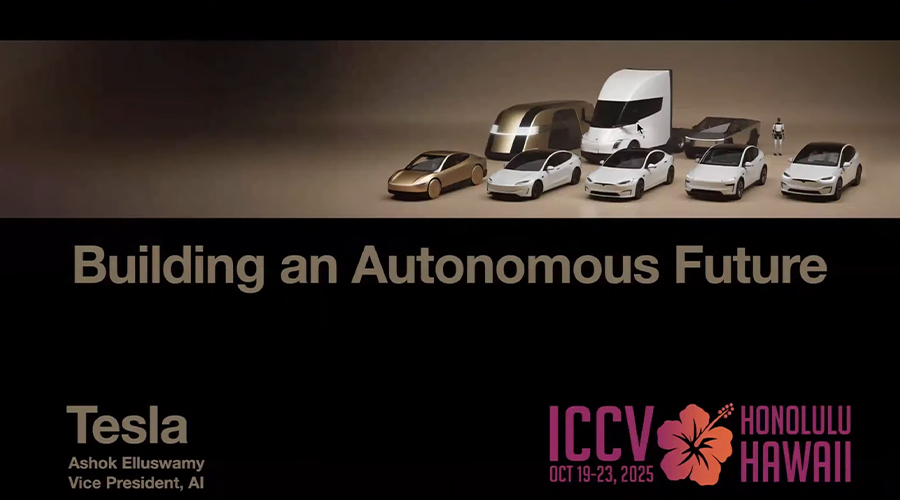Tesla is pushing the boundaries of autonomous driving with a new suite of AI and simulation technologies, as revealed in a recent 30-minute presentation by Tesla VP of AI Ashok Elluswamy. The presentation highlights how Tesla leverages its massive vehicle fleet and cutting-edge 3D simulation tools to refine Full Self-Driving (FSD) capabilities, accelerate robotaxi deployment, and even power future Optimus robots.
Deep dive into FSD & Tesla AI https://t.co/qLbe8MrW3x
— Tesla AI (@Tesla_AI) October 23, 2025
Harnessing the Fleet Data Advantage
Tesla’s fleet generates an astonishing 500 years of driving data every single day, providing the company with what Elluswamy calls a “Niagara Falls of data.” With 8 high-frame-rate cameras on each vehicle, raw data amounts to billions of tokens every 30 seconds. To manage this “curse of dimensionality,” Tesla compresses and extracts only the essential correlations between sensory inputs and control actions, while smart data triggers capture rare corner cases — from complex intersections to unpredictable pedestrian behavior.
End-to-End but Interpretable AI
While Tesla’s AI system is end-to-end, engineers can still interrogate it using interpretable outputs. The system can predict 3D occupancy, road boundaries, objects, traffic lights, and signs. Engineers can even query the model in natural language to understand why it made specific decisions. These auxiliary predictions don’t drive the car but provide a powerful debugging and safety validation tool.
Revolutionizing 3D Scene Modeling
Tesla has developed a custom Gaussian Splatting system for ultra-fast 3D scene reconstruction from limited camera views. This technique produces crisp, accurate 3D renderings far beyond traditional NeRF approaches, allowing engineers to visualize and debug driving environments in unprecedented detail.
Learned World Simulator and Synthetic Testing
One of Tesla’s most advanced tools is a neural-network–generated video engine that simulates all 8 Tesla camera feeds simultaneously. This fully synthetic environment allows engineers to:
- Inject adversarial events such as pedestrians or vehicles cutting in.
- Replay past failures to verify improvements.
- Test models in near real-time, effectively “driving” inside a simulated world.
Focus on Evaluation and Edge Cases
Evaluation remains one of the toughest challenges in autonomous driving. Tesla builds diverse evaluation datasets emphasizing difficult scenarios rather than straightforward highway driving. This ensures the AI is robust in complex, real-world conditions.
Looking Ahead: Robotaxi and Optimus
Tesla plans to scale its robotaxi service globally and unlock full autonomy across its fleet. The upcoming Cybercab, a next-gen 2-seat vehicle, is designed specifically for robotaxi use, aiming to deliver transportation at costs lower than public transit. Remarkably, the same neural networks and video generation tools will power the Optimus humanoid robot, enabling simulations, planning, and adaptation to new forms of movement.
Conclusion:
Tesla’s innovative combination of massive fleet data, advanced 3D modeling, and learned world simulators marks a significant leap toward fully autonomous vehicles. With robotaxi expansion and Optimus integration on the horizon, the company continues to cement its position at the forefront of AI-driven transportation.


Share:
Tesla’s Latest Safety Report Shows Autopilot is Nearly Nine Times Safer Than Human Drivers
SpaceX Reaches Incredible Starlink Milestone